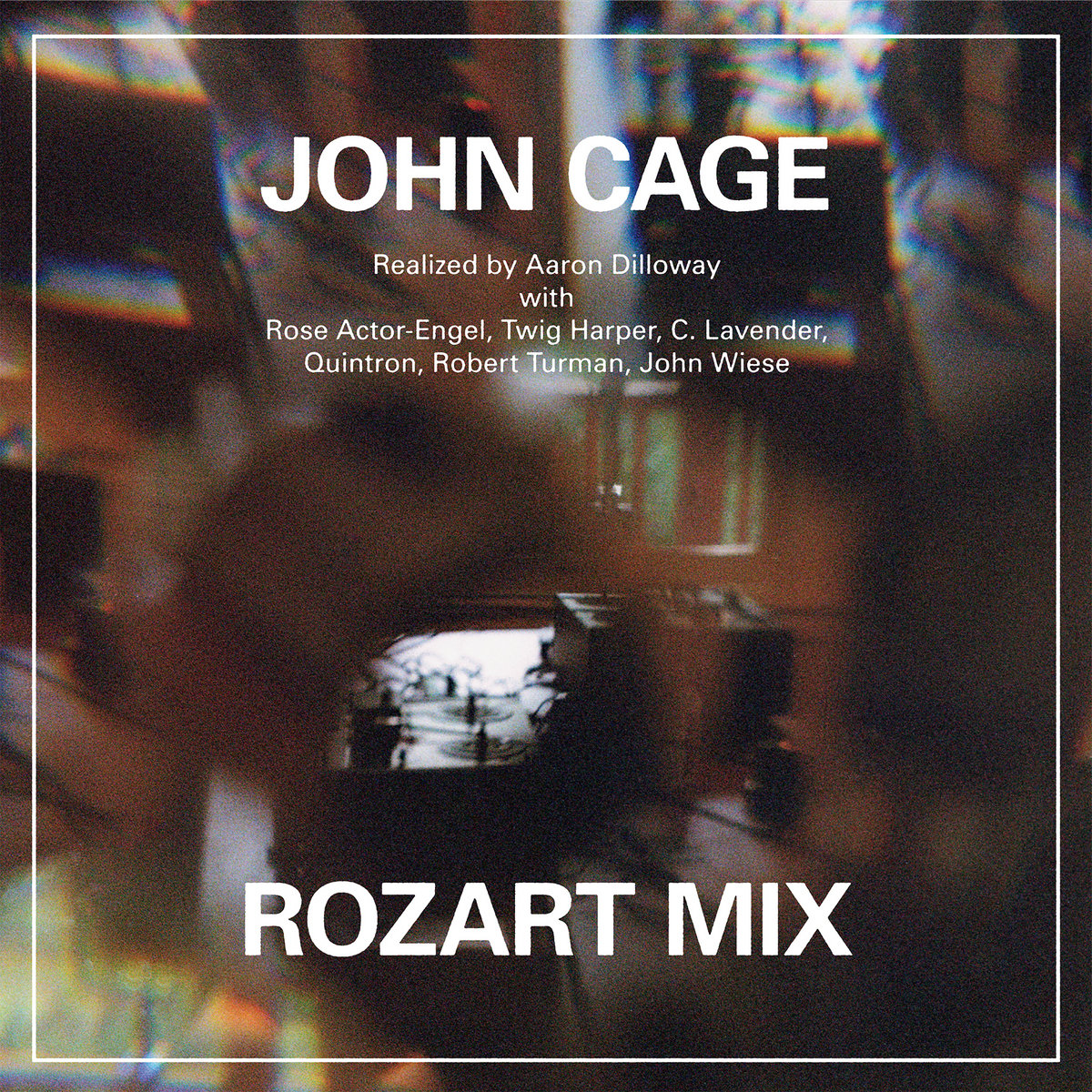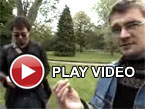John Cage/Aaron Dilloway, "Rozart Mix"
 In 1965, John Cage "composed" a piece for Alvin Lucier that debuted at Brandeis University's then-new Rose Art Museum (Lucier was employed as Brandeis's chorus director at the time). The score for the piece was characteristically Cage-ian, as it was essentially just "correspondence and notes regarding the preparation of magnetic tape" and left plenty of room for chance and spontaneity to play significant roles. While Cage settled upon a total of 88 loops to mirror the number of keys on a piano, the contents and length of those loops were left very open-ended (as was the duration of the piece itself, as its beginning and ending were determined by the arrival and departure of the audience). There was also an element of mischief to the piece as well, as Cage's original vision included loops as long as 45 feet that stretched over a fountain and also included instructions for what to do when some of the loops inevitably broke mid-performance. Unsurprisingly, performances of "Rozart Mix" are quite rare for those reasons, but Aaron Dilloway was recently lucky enough to land the time and resources necessary to perform his own personalized interpretation and there is literally no one on earth who could be better suited for such an endeavor.
In 1965, John Cage "composed" a piece for Alvin Lucier that debuted at Brandeis University's then-new Rose Art Museum (Lucier was employed as Brandeis's chorus director at the time). The score for the piece was characteristically Cage-ian, as it was essentially just "correspondence and notes regarding the preparation of magnetic tape" and left plenty of room for chance and spontaneity to play significant roles. While Cage settled upon a total of 88 loops to mirror the number of keys on a piano, the contents and length of those loops were left very open-ended (as was the duration of the piece itself, as its beginning and ending were determined by the arrival and departure of the audience). There was also an element of mischief to the piece as well, as Cage's original vision included loops as long as 45 feet that stretched over a fountain and also included instructions for what to do when some of the loops inevitably broke mid-performance. Unsurprisingly, performances of "Rozart Mix" are quite rare for those reasons, but Aaron Dilloway was recently lucky enough to land the time and resources necessary to perform his own personalized interpretation and there is literally no one on earth who could be better suited for such an endeavor.
This album's origins date back to 2020, as Dilloway was contacted by the John Cage Trust and Acra, NY's Wave Farm about staging a fresh performance of the piece. The following year, Dilloway spent "a wonderful and intense week" at Bard College researching Cage's notes and materials, then performed a 6-hour version at the Trust with the assistance of Rose Actor-Engel, Twig Harper, C. Lavender, Quintron, Robert Turman, and John Wiese. According to Dilloway, the performance involved "12 individually amplified reel to reel tape machines, placed around multiple floors of a house, playing 88 tape loops spliced together by 5 to 175 splices" and "created an overwhelming and joyous environment of cacophonous sound." Amusingly, that performance just leapt to the top of my ever-expanding list of "missed concert" regrets, as I used to live a mere 10 minutes from Bard College. Alas. On the bright side, the durational constraints of vinyl have distilled that performance to a mere 16 minutes of surrealist magic that I can now experience at home. It is certainly less immersive and hypnotic than a 6-hour dose would be, but the new brevity imbues the piece with the "all killer, no filler" feel of a great noise set, so I am definitely not complaining.
For lack of a better term, the blurting and heaving sounds collected on the tapes tend to be non-musical ones. In fact, the album's second half is broken down into excerpts from the individual tapes so they can be heard outside their chaotic and hallucinatory context, but there are still not many obviously recognizable sounds and even those are sped-up, slowed-down, or chopped up in such a kaleidoscopic fashion that they sound like a cross between a tape being eaten and a car crash. In the context of the piece itself, however, all of the fragmented moving parts lock into a wonderfully lurching and convulsive rhythm that feels like a heaving juggernaut spraying sparks everywhere as it tenaciously lumbers forward. To my ears, the overall effect lies somewhere between a clockwork Frankenstein's monster of jabbering, skittering, and crunching chaos, the audio from a hundred hours of Looney Tunes cartoons happening all at once, and an imagined classic Nurse With Wound album (or at least an inspired mutation of Coil's "Disco Hospital"). In short, it sounds absolutely deranged in the best possible way, as its more nightmarish tendencies are beautifully balanced with playfully cartoonish ones like oinking pigs and a squeaky toy (or possibly a cartoon squirrel). Also, having listened to excerpts from a couple of previous performances, I can safely say that Dilloway's version is a refreshingly radical and unique one, as the feel of the piece changes dramatically depending on variables like speed and the number of splices. This one is definitely on the fast and choppy end of the spectrum and it is absolutely glorious because of it.
There are plenty of ambitiously avant-garde conceptual pieces from the mid-20th century that sound tragically academic or dated now, but Dilloway has given this one a thrilling new life, as this version sounds vibrantly alive, endearingly maniacal, and punk as fuck. Which is exactly how I would want a new Aaron Dilloway album to sound.



